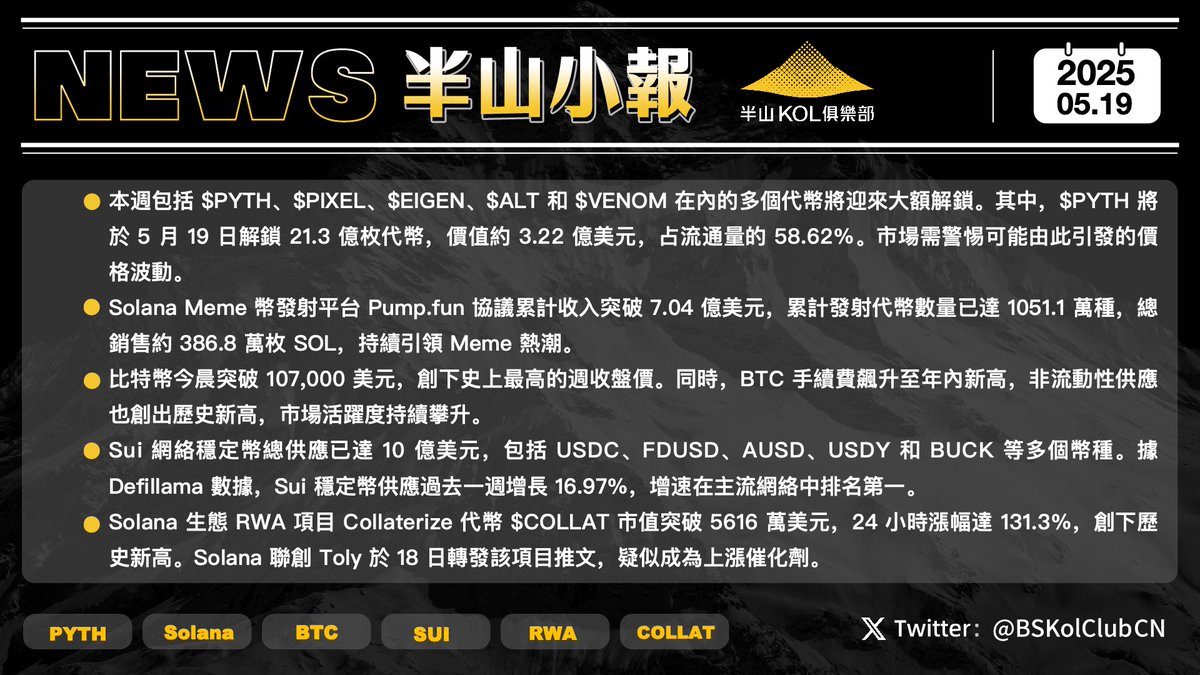
EIGEN
Eigen price
$1.2984
-$0.01300
(-1.00%)
Price change for the last 24 hours

How are you feeling about EIGEN today?
Share your sentiments here by giving a thumbs up if you’re feeling bullish about the coin or a thumbs down if you’re feeling bearish.
Vote to view results
Eigen market info
Market cap
Market cap is calculated by multiplying the circulating supply of a coin with its latest price.
Market cap = Circulating supply × Last price
Market cap = Circulating supply × Last price
Circulating supply
Total amount of a coin that is publicly available on the market.
Market cap ranking
A coin's ranking in terms of market cap value.
All-time high
Highest price a coin has reached in its trading history.
All-time low
Lowest price a coin has reached in its trading history.
Market cap
$391.83M
Circulating supply
300,552,312 EIGEN
17.42% of
1,725,143,489 EIGEN
Market cap ranking
89
Audits

Last audit: Apr 26, 2022
24h high
$1.5132
24h low
$1.2691
All-time high
$5.6590
-77.06% (-$4.3606)
Last updated: Dec 17, 2024
All-time low
$0.65900
+97.02% (+$0.63940)
Last updated: Apr 7, 2025
Eigen Feed
The following content is sourced from .

TechFlow
Source: Crypto Pump & Dumps Have Become the Ugly Norm. Can They Be Stopped?
Finishing & compilation: lenaxin, ChainCatcher
This article is an interview with José Macedo, founder of Delphi Labs, Omar Shakeeb, co-founder of SecondLane, and Taran Sabharwal, CEO of STIX, who talk about liquidity shortages, market manipulation, inflated valuations, opaque lock-up mechanisms, and how the industry is self-regulating in crypto markets.
ChianCatcher has compiled the content.
TL; DR
The core function of a market maker is to provide liquidity to the token and reduce trading slippage.
Option incentives in the crypto market may induce "pump-and-dump" behavior.
A fixed-fee model is recommended to reduce the risk of manipulation.
The crypto market can refer to the regulatory rules of traditional finance, but it needs to adapt to the decentralized nature.
Exchange regulation and industry self-regulation are key entry points to drive transparency.
The project party manipulated the market by falsely reporting the liquidity and passing on the selling pressure through over-the-counter transactions.
Reduce the valuation of project financing to avoid retail investors taking over high-bubble assets.
The lock-up mechanism was not transparent, and early investors were forced to liquidate informally, triggering a stampede: dYdX plummeted.
The interests of VCs and founders are misaligned, and token unlocking is out of touch with ecological development.
On-chain disclosure of true liquidity, lock-up terms, and market maker dynamics.
Allow for the release of reasonable liquidity and hierarchical capital collaboration.
Refinance after verifying product demand to avoid misleading VC hotspots.
(1) The functions of market makers and the risk of manipulation
Laura Shin: Let's start with a deep dive into the role of market makers in the crypto market. What core problems do they solve for the project side and the market? At the same time, what are the potential manipulation risks of the current market mechanism?
José Macedo: The core function of a market maker is to provide liquidity across multiple trading venues to ensure that the market has sufficient depth to buy and sell. Its profit model mainly relies on the bid-ask spread.
Unlike traditional financial markets, in the cryptocurrency market, market makers tend to acquire large amounts of tokens through option protocols, thus accounting for a large percentage of the circulating supply, which gives them the potential ability to manipulate prices.
Such option agreements typically contain the following elements:
The strike price is typically based on the previous funding price or the 7-day weighted average price (TWAP) after issuance, representing a premium of 25%-50%.
When the market price touches the strike price, the market maker has the right to exercise the option and make a profit.
This protocol structure will incentivize market makers to artificially drive up prices to some extent. While mainstream market makers are generally more cautious, non-standard option agreements do have potential risks.
We recommend that project parties adopt a "fixed fee" model, i.e. pay a fixed fee on a monthly basis to engage market makers, and require them to maintain reasonable bid-ask spreads and continuous market depth, rather than driving prices through complex incentive structures.
In short, fees should be independent of token price performance; Cooperation should be service-oriented; Avoid distorting goals with incentives.
Taran Sabharwal: The core value of a market maker is to reduce trading slippage. For example, I ran a seven-figure trade on Solana that generated 22% on-chain slippage, and a professional market maker was able to optimize this metric significantly. Given the cost savings for its services for all traders, market makers deserve to be compensated accordingly.
When selecting a market maker, the project team needs to clarify the incentive target. Under the basic service model, market makers mainly provide liquidity and lending services; In the short-term advisory model, short-term incentives are set around key nodes such as mainnet launches, such as TWAP triggering mechanisms to stabilize prices.
However, if the strike price is set too high, if the price exceeds expectations, market makers may execute option arbitrage and sell tokens on a large scale, increasing market volatility.
Lessons learned show that it is necessary to avoid presetting excessively high strike prices and give priority to the basic service model to control the uncertainty caused by complex agreements.
Omar Shakeeb: There are two core problems with the current market-making mechanism.
First, there is a misalignment of incentives. Market makers tend to focus more on arbitrage opportunities from rising prices than on their fundamental role of providing liquidity. They are supposed to attract retail traders by providing liquidity on a continuous basis, rather than simply betting on price fluctuations to make arbitrage gains.
Second, there is a serious lack of transparency. Project parties usually employ multiple market makers at the same time, but these institutions operate independently of each other and lack a synergistic mechanism. At present, only project foundations and exchanges have a specific list of market maker partners, while secondary market participants do not have access to information about the executors of trades. This lack of transparency makes it difficult to hold accountable those responsible for market anomalies.
(2) Movement Turmoil: The Truth of Private Equity, Market Making and Transparency
Laura Shin: Has your company been involved with Movement?
Omar Shakeeb: Our firm did do work with Movement, but only in the private markets. Our business processes are extremely rigorous, and we are in close communication with the founders of the project, including Taran. The background of each investor, advisor and other participant is rigorously investigated and reviewed.
However, we are not aware of the pricing and specific operations involved in the market making process. The relevant documents are only in the internal possession of the project foundation and the market maker, and are not disclosed to other parties.
Laura Shin: So, did your company ever act as a market maker during the project's Token Generation Event (TGE)? However, I guess the agreement between your company and the foundation should be very different from the agreement of the market maker, right?
Omar Shakeeb: No, we're not involved in market making. We're in private markets, which is a completely different area from market making. Private markets are essentially an over-the-counter (OTC) transaction, which typically takes place before and after a TGE.
José Macedo: Does Rushi sell tokens through OTC trading?
Omar Shakeeb: As far as I know, Rushi didn't sell tokens through OTC trading. The Foundation has made it clear that it will not make a sell-off, but how to verify this commitment remains a difficult question. This risk is also present in the trading of market makers. Even if a market maker completes a large transaction, it may only be selling tokens on behalf of the project team, and the outside world has no way of knowing the details. This is the problem caused by the lack of transparency.
I recommend that wallets be clearly marked from the initial stage of token distribution, such as "Foundation Wallet", "CEO Wallet", "Co-Founder Wallet", etc. In this way, the origin of each transaction can be traced, making it clear what the parties actually sell.
José Macedo: We did consider tagging wallets, but this could lead to privacy breaches and higher barriers to entry.
(3) Exchange and industry self-discipline: the feasibility of regulatory implementation
José Macedo: Hester Pierce's recent proposal for safe harbor rules emphasized that project parties should disclose their market-making arrangements.
Currently, exchanges tend to maintain low liquidity to achieve high valuations, while market makers rely on information gaps for high fees.
We can learn from the regulatory experience of traditional finance (TradFi). The Securities Exchange Act of the 1930s and Edwin Lefebvre's Memoirs of a Stock Dealer revealed market manipulation in the 70s and 80s of the 20th century, such as inflating trading volumes to induce retail investors to take orders, are similar to some of the phenomena in the cryptocurrency market today.
Therefore, we recommend introducing these well-established regulatory regimes into the cryptocurrency space to effectively curb price manipulation. Specific measures include:
It is forbidden to manipulate market prices by means of false pending orders, preemptive trading, and priority execution.
Ensure the transparency and impartiality of the price discovery mechanism and prevent any behavior that may distort the price signal.
Laura Shin: There are a number of challenges to achieving transparency between issuers and market makers. As Evgeny Gavoy points out on The Chop Block, there is a general lack of transparency in market making in Asian markets, and it is nearly impossible to achieve global regulation.
So, how can these obstacles be overcome? Is it possible to drive change through industry self-regulation? Is it possible to form a hybrid model of "global convention + regional implementation" in the short term?
Omar Shakeeb: The biggest problem is the opacity of what works at the bottom of the market. If the top market makers can voluntarily establish an open-source information disclosure mechanism, this will significantly improve the current market situation.
Laura Shin: But will this lead to a phenomenon of "bad money driving out good money"? Violators may avoid compliance agencies, so how do you really curb this bad behavior?
José Macedo: At the regulatory level, there is a way to promote transparency through exchange audits. Specific measures include requiring exchanges to publish a list of market makers and establishing a "compliance whitelist" system.
In addition, industry self-discipline is equally important. For example, the audit mechanism is a typical case. Although not legally mandated, it is almost impossible to secure investment for projects that are not audited today. Similarly, similar criteria can be established for the qualification review of market makers. If a project is found to be using non-compliant market makers, its reputation will be damaged. Just as there are good and bad audit institutions, the reputation system of market makers also needs to be established.
The implementation of supervision is feasible, and centralized exchanges are the key entry point. These exchanges generally want to serve U.S. users, and U.S. law has a wide range of jurisdictions over crypto businesses. Therefore, regardless of whether the user is located in the United States or not, as long as they use exchanges in the United States, they need to comply with the relevant regulations.
In summary, exchange regulation and industry self-discipline can be important means to effectively regulate market behavior.
Laura Shin: You mentioned that market makers should be made public and that compliant market makers should be recognized by the market. However, if someone deliberately selects a non-compliant market maker, and the institution itself lacks the incentive to publicly disclose the partnership, then the project may use the compliant market maker to maintain its reputation, but in fact entrust the operation to an opaque institution. The key questions are:
How to ensure that the project team fully discloses all the market makers it works with?
For market makers who do not actively disclose information, how can the outside world discover their illegal operations?
José Macedo: If an exchange is found to be using a non-whitelisted institution in violation of the rules, it is tantamount to fraud. Although the project team can theoretically cooperate with multiple market makers, in practice, due to the limited liquidity of most projects, there are usually only 1-2 core market makers, so it is difficult to hide the real partners.
Taran Sabharwal: This should be looked at from the perspective of a market maker. First of all, it is one-sided to simply divide market makers into "compliant" and "non-compliant". How can non-regulated exchanges be required to ensure the compliance of their trading entities? The top three exchanges (Binance, OKEx, Bybit) are all offshore and unregulated, while Upbit focuses on spot trading in the Korean market.
Regulation faces many challenges, including geographical differences, top monopolies, and high barriers to entry. In terms of the division of responsibilities, the project founder should bear the primary responsibility for his manipulation. Although the exchange's censorship mechanism is already quite strict, it is still difficult to eliminate circumvention operations.
In the case of Movement, the problem is essentially a social blunder, such as over-promising and mis-shifting control, rather than a technical flaw. Although its token market cap has dropped from 14 billion FTB to 2 billion, there are still quite a few new projects following suit. However, the team's structural mistakes, particularly the improper transfer of control, ultimately led to the project being zeroed.
Laura Shin: How can all parties work together to address the many issues that have been exposed?
José Macedo: Disclosure of true liquidity is key. Many projects inflate valuations by inflating circulation, but in reality a large number of tokens are still locked up. However, tokens held by foundations and labs are generally not subject to lock-up periods, which means they can be sold through market makers on the token's initial day.
This is essentially a "soft exit": the team cashes out when the market is at its peak on the first day, and then uses the funds to buy back the unlocked team tokens after a year, or to use them to boost the protocol's TVL for a short period of time before withdrawing funds.
In terms of token distribution mechanisms, cost-based unlocking mechanisms should be introduced, such as those of platforms such as Legion or Echo. Currently, channels such as Binance Launchpool have obvious flaws, and it is difficult to distinguish between real user funds and platform-owned funds in multibillion-dollar pools. Therefore, there is an urgent need to establish a more transparent public offering mechanism.
Transparency in the market-making process and ensuring that retail investors have a clear picture of what the token is actually holding is also crucial. While most of the projects have made progress in terms of transparency, further improvements are needed. To do this, it is essential to require the disclosure of the details of the market maker's token lending protocol, including key information such as the amount to be borrowed, the option agreement, and its exercise price, in order to provide retail investors with more comprehensive market insights to help them make more informed investment decisions.
In general, the disclosure of the true circulation, the disclosure of the market-making protocol, and the improvement of the token distribution mechanism are the most urgent reform directions at present.
Omar Shakeeb: The first issue is to adjust the financing valuation system. Current project valuations are inflated, generally $3 billion to $5 billion, which is beyond the reach of retail investors. In the case of Movement, its token fell from a valuation of 14 billion to 2 billion, an exorbitant initial valuation that did not benefit either party. It should return to early valuation levels such as Solana ($3-400 million) to allow more users to participate at a reasonable price, which is also more conducive to the healthy development of the ecosystem.
Regarding the use of ecosystem funds, we have observed that project parties often fall into operational difficulties. Over-the-counter trading? Or is it some other way? We always recommend choosing an over-the-counter (OTC) transaction to ensure that the recipient of the funds is aligned with the strategic objectives of the project. Celestia is a case in point, as they raised more than $100 million at a valuation of $3 billion after the token launch, but achieved effective allocation of funds through proper planning.
(4) The truth of market manipulation
Laura Shin: Is the essence of the current market regulation measures to gradually steer artificially manipulated token activities, such as market maker intervention, into a development trajectory that conforms to the laws of the natural market? Can this transformation be a win-win situation for all parties, safeguarding the interests of early-stage investors and ensuring the sustainability of the project team?
José Macedo: The structural contradiction facing the market today is the imbalance of the valuation system. In the last round of bull market, due to the scarcity of projects, the market showed a general upward trend; In this cycle, due to the overinvestment of venture capital (VC), there is a serious surplus of infrastructure tokens, resulting in most funds falling into a cycle of losses and having to sell their positions to raise new funds.
This imbalance between supply and demand directly changes the pattern of market behavior. Buyer's funds are fragmented, and the holding period is shortened from years to months or even weeks. The OTC market has fully shifted to hedging strategies, and investors have maintained market neutrality through options instruments, completely saying goodbye to the naked long strategy of the previous cycle. Stakeholders must face up to this shift: the success of Solana and AVAX has been built on a gap in the industry, while new projects need to adopt a small liquidity strategy (e.g., Ondo keeps actual circulation below 2%) and maintain price stability through off-market agreements with large holders such as Columbia University.
Projects such as Sui and Mantra, which performed well in this round, have all verified the effectiveness of this path, while Movement's attempt to stimulate prices through tokenomics without a mainnet has proven to be a major strategic mistake.
Laura Shin: If Columbia University didn't create a wallet, how did they receive these tokens? This seems a bit counterintuitive.
Taran Sabharwal: Columbia University, as one of the main institutional holders of Ondo, has a non-circulating state of tokens because it has not created a wallet, which objectively forms a phenomenon of "paper circulation". The structure of the project's tokenomics is distinctive: after mass unlocking in January of this year, there will be no new token releases until January 2025. Market data shows that despite active perpetual contract trading, the depth of the spot order book is severely insufficient, and this artificial shortage of liquidity has left prices vulnerable to small amounts of money.
In contrast, Mantra has adopted a more aggressive liquidity manipulation strategy. The project team transferred the selling pressure to the forward buyers through over-the-counter transactions, and at the same time used the proceeds to pull orders in the spot market. With just $20 million to $40 million, a 100-fold increase in price was created on a deeply weak order book, sending the market capitalization soaring from $100 million to $12 billion. This "time arbitrage" mechanism is essentially a short-squeeze using liquidity manipulation, rather than a price discovery process based on real demand.
Omar Shakeeb: The crux of the matter is that the project team has set up a multi-lock-up mechanism, but these lock-up terms have never been publicly disclosed, which is the trickiest part of the whole incident.
José Macedo: Authoritative data sources like CoinGecko show a serious distortion of the token's circulation. The project team often counts the "inactive tokens" controlled by the foundation and the team into the circulation, resulting in a surface liquidity rate of more than 50%, while the actual liquidity entering the market may be less than 5%, of which 4% is still controlled by market makers.
This systematic data manipulation has been suspected of fraud. When investors trade based on the misconception of 60% of the circulating supply, in fact, 55% of the tokens are frozen in cold wallets by the project team. This severe information gap directly distorts the price discovery mechanism, making only 5% of the true float a tool for market manipulation.
Laura Shin: JP (Jump Trading) has been extensively researched, do you think this is an innovative model worth learning from, or does it reflect the short-term arbitrage mentality of market participants? How should the nature of such a strategy be characterized?
Taran Sabharwal: JP's operation demonstrates a subtle ability to control market supply and demand, but its essence is a short-term illusion of value achieved by artificially creating a liquidity shortage. This strategy is not replicable and will undermine the health of the market in the long run. The current market imitation phenomenon exposes the mentality of participants who are eager for quick success, that is, they focus too much on market value manipulation and ignore real value creation.
José Macedo: There needs to be a clear distinction between "innovation" and "manipulation". In traditional financial markets, such operations would be characterized as market manipulation. The crypto market appears "legitimate" due to regulatory gaps, but this is essentially a wealth transfer through information gaps, rather than sustainable market innovation.
Taran Sabharwal: The core issue is the behavioural patterns of market participants. In the current crypto market, the vast majority of retail investors lack basic due diligence awareness, and their investment behavior is essentially closer to gambling than rational investment. This irrational mentality of chasing short-term windfall profits has objectively created an ideal operating environment for market manipulators.
Omar Shakeeb: The crux of the matter is that the project team has set up multiple lock-up mechanisms, but these lock-up terms have never been publicly disclosed, and this is the trickiest part of the whole incident.
Taran Sabharwal: The truth about market manipulation is often hidden in the order book, and when a $1 million buy order can drive a 5% price move, the depth of market is non-existent. Many project parties take advantage of the technical unlocking vulnerability (the token is unlocked but is actually locked for a long time) to falsely report the circulation, causing short sellers to misjudge the risk. When Mantra breached 1 billion for the first time, a large number of short sellers liquidated their positions.
WorldCoin is a case in point. At the beginning of last year, its fully diluted valuation was as high as 12 billion, but the actual circulating market capitalization was only 500 million, creating a more extreme liquidity shortage than the ICP that year. Although this operation has allowed WorldCoin to maintain a valuation of 20 billion so far, it is essentially harvesting the market through information gaps.
However, JP needs to be evaluated objectively: during the market downturn, he even sold his personal assets to buy back tokens and keep the project running through equity financing. This dedication to the project really shows the responsibility of the founder.
Omar Shakeeb: JP is trying to turn the tide, but it's not easy to make a comeback after being caught in this situation. Once market trust has collapsed, it is difficult to rebuild.
(5) The game between founders and VCs: the long-term value of the token economy
Laura Shin: Do we have fundamental differences in the development concept of the crypto ecosystem, and are Bitcoin and Cex fundamentally different? Should the crypto industry prioritize token game design that encourages short-term arbitrage, or return to value creation? When price is disconnected from utility, does the industry have long-term value?
Taran Sabharwal: The crypto market is not alone, as liquidity manipulation is also common in traditional stock market small- and mid-cap stocks. However, the current crypto market has evolved into a fierce game between institutions, with market makers hunting proprietary traders, quantitative funds harvesting hedge funds, and retail investors have long been marginalized.
The industry is moving away from the original purpose of crypto. By the time new entrants pitch Dubai properties to practitioners, the market has essentially become a naked game of wealth harvesting. A typical case is dBridge, despite its leading cross-chain technology, with a token market cap of only $30 million; On the other hand, the meme coin, which has no technical content, easily exceeded the valuation of 10 billion yuan with marketing gimmicks.
This twisted incentive is dismantling the industry's foundations, and who is going to bother polishing a product when traders can make a profit of $20 million by speculating on "goat coins"? The spirit of crypto is being eroded by a short-term arbitrage culture, and builders' innovation drive is being severely challenged.
José Macedo: There are two very different narratives in the crypto market today. Viewing a "casino" as a zero-sum game as an engine of technological innovation leads to the exact opposite conclusion. Although the market is full of speculative behaviors such as short-term arbitrage of VC and market value management of project parties, there are also many builders who are quietly developing infrastructure such as identity protocols and decentralized exchanges.
Just like in the traditional venture capital space, 90% of startups fail but drive overall innovation. The core contradiction of the current token economy is that a poor start-up mechanism can permanently damage a project's potential, and who wants to join when engineers witness an 80% crash in tokens? This highlights the importance of designing sustainable token models that both resist the temptation of short-term speculation while reserving resources for long-term development.
It's exciting to see that more and more founders are proving that crypto can outperform financial games.
Laura Shin: The real dilemma is how to define a "soft landing".
Ideally, token unlocking should be deeply tied to the maturity of the ecosystem. Only when the community is self-organized and the project enters the stage of sustainable development can the founding team's profit-making behavior be justified.
However, the practical dilemma is that almost all unlocking conditions can be manipulated artificially, except for time locks, which is the core contradiction faced by the current token economy design.
Omar Shakeeb: The root of the current token economy design problem began with the first round of funding negotiations between VCs and founders, emphasizing that the token economy involves a balance of interests between multiple parties, both to meet LP return demands and be responsible to retail investors. However, in reality, project parties often sign secret agreements with top funds (such as the high valuation terms of A16Z's investment in Aguilera are not disclosed until months later), and retail investors do not have access to OTC transaction details, resulting in liquidity management becoming a systemic problem.
Token issuance is not the end but the starting point of being responsible for the crypto ecosystem, and every failed token experiment is consuming market trust capital. If the founders are unable to ensure the long-term value of the token, they should stick to the equity financing model.
José Macedo: The misalignment between the interests of VC and founders is the core contradiction, VC seeks to maximize portfolio returns, and founders are inevitably impulsive to cash out in the face of huge wealth. Only when on-chain verifiable mechanisms (such as TVL fraud monitoring, liquidity knock verification) are perfected, can the market truly move towards standardization.
(6) The way out for the industry: transparency, collaboration and return to the essence
Laura Shin: So far, we have sorted out the room for improvement among the participants, VCs, project parties, market makers, exchanges and retail investors themselves. What do you think should be improved?
Omar Shakeeb: For founders, the first priority is to verify the product-market fit, rather than blindly chasing high capital raising. Practice has shown that instead of raising 50 million yuan but unable to create market demand, it is better to use 2 million yuan to verify the feasibility and then gradually expand.
That's why we publish our Private Markets Liquidity Report on a monthly basis. Only by putting all the dark box operations under the sun can the market achieve truly healthy development.
Taran Sabharwal: The current structural contradictions in the crypto market are in a dilemma for founders. It is necessary to resist the temptation of short-term riches and stick to value creation, and at the same time deal with the pressure of high development costs.
Some foundations have become the founder's private treasury, and the billion-dollar market value of the "zombie chain" continues to consume ecological resources. While the concept of meme coins and AI is being hyped in turns, infrastructure projects are running out of liquidity, and some teams have even been forced to postpone their token offerings for two years. This systemic distortion is seriously squeezing the living space of builders.
Omar Shakeeb: In the case of Eigen, for example, when it was valued at $6 billion to $7 billion, there were $20 million to $30 million in the over-the-counter market, but the fund refused to release liquidity. This ultra-conservative strategy was a missed opportunity to ask the team if they needed a $20 million acceleration roadmap or allow early investors to liquidate 5-10% of their holdings for a reasonable return.
The essence of the market is a collaborative network of value distribution, not a zero-sum game. If the project party monopolizes the value chain, the ecological participants will eventually leave.
Taran Sabharwal: This exposes the most fundamental power game in the token economy, where founders tend to see early exits as a betrayal, while ignoring that liquidity itself is a key indicator of ecological health. When all participants are forced to lock their positions, the seemingly stable market capitalization actually hides systemic risk.
Omar Shakeeb: At present, the crypto market urgently needs to establish a positive cycle of value distribution mechanism: allowing early-stage investors to exit at a reasonable time can not only attract high-quality long-term capital, but also form a synergistic effect of capital of different maturities.
Short-term hedge funds provide liquidity, and long-term funds help growth. This tiered collaboration mechanism is far more conducive to ecological prosperity than forced lock-up, and the key is to build bonds of trust, and reasonable returns from Series A investors will attract a continuous injection of Series B strategic capital.
José Macedo: Founders need to recognize the harsh reality that behind every successful project there are a lot of failures. When the market frantically pursues a certain concept, most teams end up unable to issue tokens for two years, forming a vicious circle of concept arbitrage, which is essentially an overdraft of the industry's innovation power.
The real way to break the situation lies in returning to the essence of the product and developing the real demand with minimum feasible financing, rather than chasing hot signals in the capital market. In particular, it is necessary to be vigilant against mass mispositives caused by VC false signals. When a concept receives a large amount of funding, it often leads to the founders misinterpreting it as a real demand in the market.
As the gatekeeper of the industry, exchanges should strengthen their infrastructure functions, establish a disclosure system for market maker agreements, ensure that the liquidity data chain is verifiable, and standardize the OTC transaction reporting process. Only by improving the market infrastructure can we help founders get rid of the prisoner's dilemma of "death or hype" and promote the industry to return to the right track of value creation.
Show original2.26K
0

半山KOL俱樂部
Mid-levels tabloid #第57期 📰
This week, a number of tokens such as $PYTH, $PIXEL, $EIGEN, $ALT and $VENOM will be unlocked in large amounts, among which $PYTH will unlock 2.13 billion tokens on May 19, with a market capitalization of about $322 million, accounting for nearly 60% of the circulating supply. Be wary of potential price fluctuations.
Bitcoin prices broke above $107,000 this morning, setting a new all-time weekly closing high. At the same time, BTC fees and illiquid supply both hit new year-on-year highs, indicating that market activity continues to rise.
The total supply of stablecoins on the Sui network has exceeded $1 billion, covering a variety of assets, including USDC, FDUSD, AUSD, USDY, and BUCK. According to Defillama, the Sui stablecoin supply has grown by nearly 17% over the past week, the fastest growth rate among major networks.
The popularity of the Solana ecosystem continues to heat up, and the RWA project Collaterize token $COLLAT has risen by 131.3% in the last 24 hours, with a market value of more than $56.16 million. Solana co-founder Toly's pivotal move may be an important catalyst for this wave of growth.
The meme boom continues, and the token launch platform protocol revenue on Solana has exceeded 704 million US dollars, with a total of more than 10.51 million tokens launched and a total sales of 3.868 million SOLs, continuing to promote the vitality of the ecosystem.
⏳ Market signals are frequent, funds and sentiment are heating up, investors should pay close attention to the follow-up trend.
#Solana #Sui #PYTH #Crypto #BTC #Web3 #RWA #Meme #COLLAT
Show original
38.58K
14

Joanna Zeng @ SOON (🔴,💊)📍NYC | Mainnet Live!
we get support from great partners like @anza_xyz @Solana_zh @eigen_da @boundless_xyz with appreciation, we will also support more builders like @cobaltx_io @AeroNyxNetwork like what we got from our partners

akshat | svm/acc
trust matters a lot in web3, and @soon_fdn is delivering, props to their security game.
ongoing audits, bug bounties, and an emergency response squad keep @soon_svm’s ecosystem locked down.
7.26K
33
Eigen price performance in USD
The current price of Eigen is $1.2984. Over the last 24 hours, Eigen has decreased by -0.99%. It currently has a circulating supply of 300,552,312 EIGEN and a maximum supply of 1,725,143,489 EIGEN, giving it a fully diluted market cap of $391.83M. At present, the Eigen coin holds the 89 position in market cap rankings. The Eigen/USD price is updated in real-time.
Today
-$0.01300
-1.00%
7 days
-$0.15650
-10.76%
30 days
+$0.47040
+56.81%
3 months
-$0.37960
-22.63%
Popular Eigen conversions
Last updated: 05/19/2025, 19:08
| 1 EIGEN to USD | $1.3040 |
| 1 EIGEN to BRL | R$7.3864 |
| 1 EIGEN to PHP | ₱72.5807 |
| 1 EIGEN to EUR | €1.1584 |
| 1 EIGEN to IDR | Rp 21,429.75 |
| 1 EIGEN to GBP | £0.97546 |
| 1 EIGEN to CAD | $1.8195 |
| 1 EIGEN to AED | AED 4.7895 |
About Eigen (EIGEN)
- Official website
- White Paper
- Block explorer
About third-party websites
About third-party websites
By using the third-party website ("TPW"), you accept that any use of the TPW will be subject to and governed by the terms of the TPW. Unless expressly stated in writing, OKX and its affiliates ("OKX") are not in any way associated with the owner or operator of the TPW. You agree that OKX is not responsible or liable for any loss, damage and any other consequences arising from your use of the TPW. Please be aware that using a TPW may result in a loss or diminution of your assets.
Eigen FAQ
How much is 1 Eigen worth today?
Currently, one Eigen is worth $1.2984. For answers and insight into Eigen's price action, you're in the right place. Explore the latest Eigen charts and trade responsibly with OKX.
What is cryptocurrency?
Cryptocurrencies, such as Eigen, are digital assets that operate on a public ledger called blockchains. Learn more about coins and tokens offered on OKX and their different attributes, which includes live prices and real-time charts.
When was cryptocurrency invented?
Thanks to the 2008 financial crisis, interest in decentralized finance boomed. Bitcoin offered a novel solution by being a secure digital asset on a decentralized network. Since then, many other tokens such as Eigen have been created as well.
Will the price of Eigen go up today?
Check out our Eigen price prediction page to forecast future prices and determine your price targets.
Monitor crypto prices on an exchange
Watch this video to learn about what happens when you move your money to a crypto exchange.
Disclaimer
The social content on this page ("Content"), including but not limited to tweets and statistics provided by LunarCrush, is sourced from third parties and provided "as is" for informational purposes only. OKX does not guarantee the quality or accuracy of the Content, and the Content does not represent the views of OKX. It is not intended to provide (i) investment advice or recommendation; (ii) an offer or solicitation to buy, sell or hold digital assets; or (iii) financial, accounting, legal or tax advice. Digital assets, including stablecoins and NFTs, involve a high degree of risk, can fluctuate greatly. The price and performance of the digital assets are not guaranteed and may change without notice.
OKX does not provide investment or asset recommendations. You should carefully consider whether trading or holding digital assets is suitable for you in light of your financial condition. Please consult your legal/tax/investment professional for questions about your specific circumstances. For further details, please refer to our Terms of Use and Risk Warning. By using the third-party website ("TPW"), you accept that any use of the TPW will be subject to and governed by the terms of the TPW. Unless expressly stated in writing, OKX and its affiliates (“OKX”) are not in any way associated with the owner or operator of the TPW. You agree that OKX is not responsible or liable for any loss, damage and any other consequences arising from your use of the TPW. Please be aware that using a TPW may result in a loss or diminution of your assets. Product may not be available in all jurisdictions.
OKX does not provide investment or asset recommendations. You should carefully consider whether trading or holding digital assets is suitable for you in light of your financial condition. Please consult your legal/tax/investment professional for questions about your specific circumstances. For further details, please refer to our Terms of Use and Risk Warning. By using the third-party website ("TPW"), you accept that any use of the TPW will be subject to and governed by the terms of the TPW. Unless expressly stated in writing, OKX and its affiliates (“OKX”) are not in any way associated with the owner or operator of the TPW. You agree that OKX is not responsible or liable for any loss, damage and any other consequences arising from your use of the TPW. Please be aware that using a TPW may result in a loss or diminution of your assets. Product may not be available in all jurisdictions.





































Socials